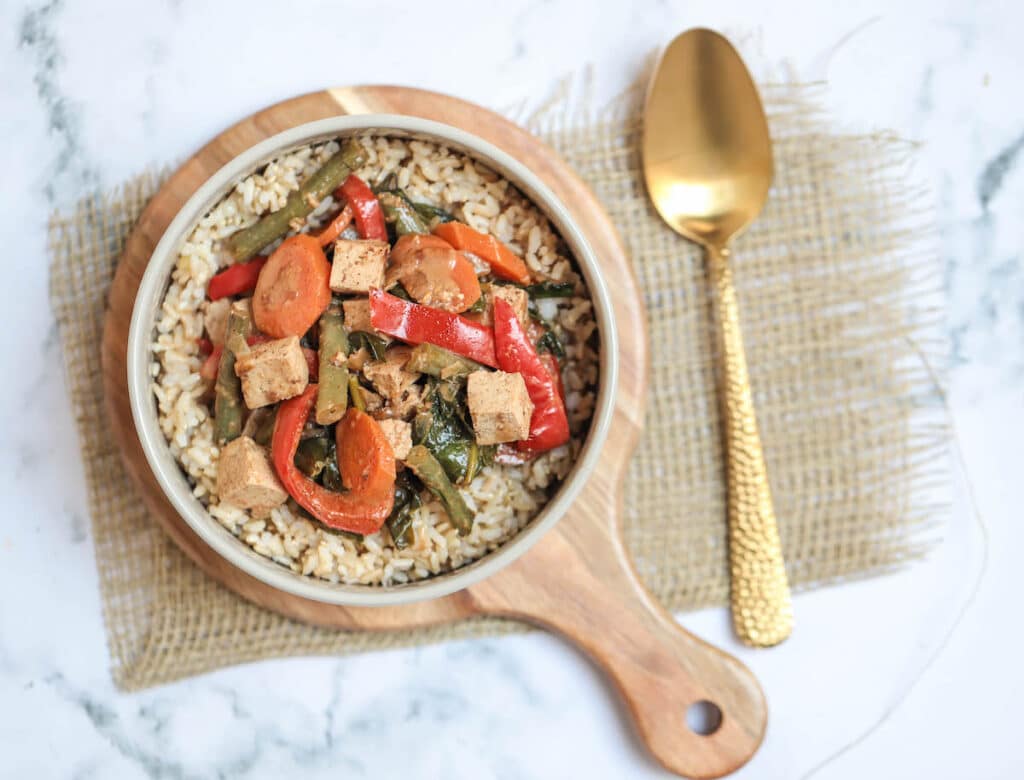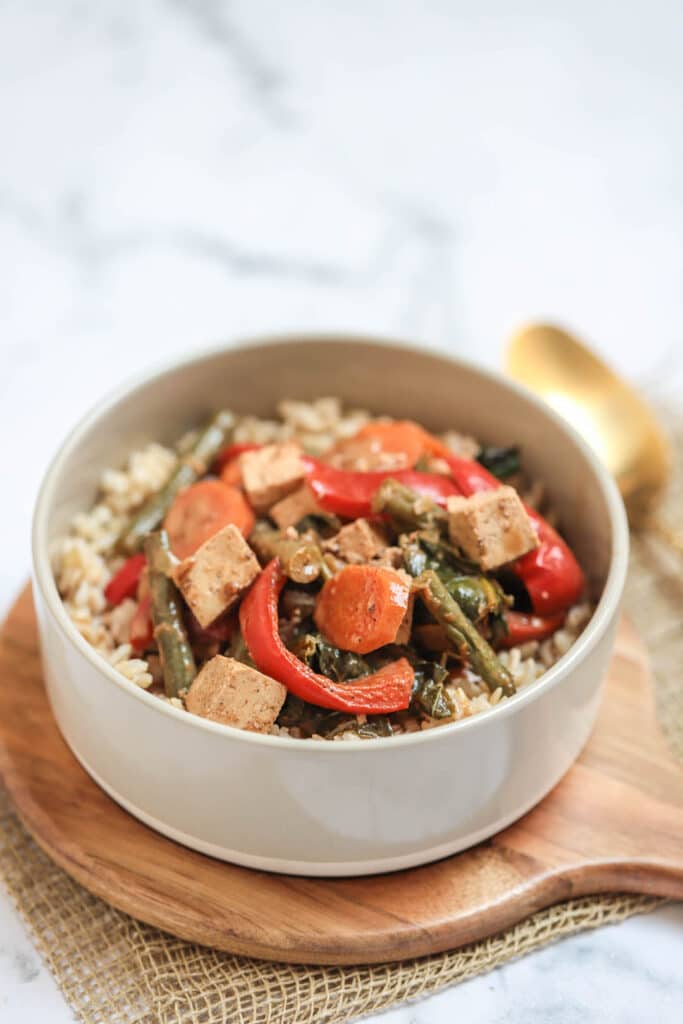A Cosy, Warming Recipe Just For You | Chicken Or Tofu Red Curry

This red curry recipe takes into account that sometimes we want to hunker down and get cosy with warm food.
And red curry makes an unbeatable choice for this purpose!
What’s more, it’s the perfect dish to add in lots more vegetables for oodles of goodness.
So we put together this lovely red curry that’s filled with fibre, phytonutrients, phytoestrogens and protein. The best recipe for balanced blood sugar and weight management.
And, of course, it also fits our PPFF guidelines.
Why choose brown rice?
We served our red curry up with brown rice which is deliciously ‘nutty’, has more nutrients than white rice and is also packed full of fibre.
Indeed, brown rice contains magnesium, selenium, niacin and because it’s lower down on the glycemic scale it helps keep blood sugar stable.
Finally, because it’s a whole grain, research has suggested it may help prevent heart disease, type 2 diabetes, bowel, pancreatic and gastric cancers.1
That’s a whole lotta reasons to choose brown rice.
Bon appetit.
Read: How Food Can Help You Have Your Best Menopause | Meet PPFF
Chicken/Tofu Red Curry
Serves 4
Ingredients
 1 cup (185g) brown rice, uncooked
1 cup (185g) brown rice, uncooked- 1 tbsp coconut oil
- 1 onion, chopped
- 1 tbsp root ginger, minced
- 2 cloves garlic, minced
- 1 red capsicum, sliced
- 1 cup (150g) green beans, chopped
- 1 carrot, sliced
- 1 cup (30g) spinach
- 200g chicken or firm tofu, drained, cubed
- 1 tbsp Thai red curry paste
- 1x (400ml) can coconut milk
- 1 tsp rice vinegar
- 1 tbsp tamari
- 1 tsp brown rice syrup
- 4 tbsp coriander, chopped
What you need to do:
- Cook the rice according to the instructions on the packaging.
- Meanwhile, heat the coconut oil in a large pot over medium-high heat and sauté the onion for 3-4 minutes.
- Now add the ginger and garlic and cook for 1-2 minutes until fragrant.
- Add the capsicum, green beans and carrots and cook until the vegetables are tender, approximately 3-4 minutes.
- Next, add the spinach and chicken/tofu and cook for 2 minutes.
- Add the curry paste and cook, stirring often, for a further 2 minutes. Add the coconut milk, rice vinegar, tamari and syrup.
- Stir well to combine then reduce the heat to low and simmer gently for 10 minutes.
- Divide the rice between 4 serving bowls or plates, top with a portion of curry, garnish with coriander and serve immediately.
References:
1. McRae MP. Health Benefits of Dietary Whole Grains: An Umbrella Review of Meta-analyses. J Chiropr Med. 2017 Mar;16(1):10-18. doi: 10.1016/j.jcm.2016.08.008. Epub 2016 Nov 18. PMID: 28228693; PMCID: PMC5310957.










